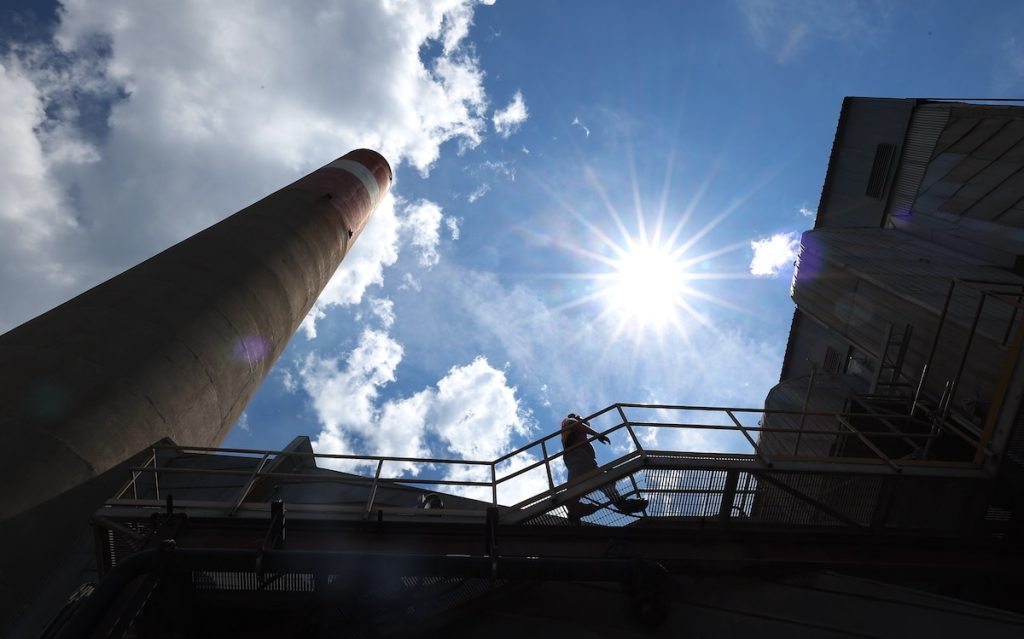1,000-Year Carbon Sequestration Strategies Necessary to Limit Global Heating, Scientists Say
3 min read
The Lafarge cement plant operates a carbon capture project that can store carbon in a final cement mix, in Bath, Ontario, Canada on June 24, 2024. Steve Russell / Toronto Star
Founded in 2005 as an Ohio-based environmental newspaper, EcoWatch is a digital platform dedicated to publishing quality, science-based content on environmental issues, causes, and solutions.
A new study suggests that the only way to stop global heating is to use carbon sequestration strategies that store carbon for 1,000 years, rather than the 100-year time frame used in many carbon sequestration models and natural sequestration by some long-lived tree species.
In their paper, Cyril Brunner, Zeke Hausfather and Reto Knutti suggest their findings demonstrate that short-term strategies for carbon storage will lead to captured carbon being released before it can be recycled naturally in Earth’s atmosphere, reported Phys.org.
“Carbon Dioxide Removal is essential for achieving net zero emissions, as it is required to neutralize any residual CO2 emissions,” the scientists wrote in the study. “Our findings suggest that a CO2 storage period of less than 1000 years is insufficient for neutralizing remaining fossil CO2 emissions under net zero emissions.”
Previous studies have shown that the many ways to sequester atmospheric carbon fall into two categories: forced and natural.
Forced carbon sequestration involves methods such as injecting carbon dioxide into rock formations underground or dropping metal-covered carbon blocks into the ocean. These methods are expected to sequester the carbon for a thousand years or more.
Carbon sequestration happens naturally when plants remove carbon from the air through the process of photosynthesis and hold it in their branches, leaves, trunk and roots until the plant dies. Long-lived trees can store carbon for a century.
“We found that storage duration substantially affects whether net zero emissions achieve the desired temperature outcomes. With a typical 100-year storage duration, net zero CO2 emissions with 6 GtCO2 per year residual emissions result in an additional warming of 1.1 °C by 2500 compared to permanent storage, thus putting the internationally agreed temperature limits at risk,” the scientists wrote.
Brunner, Hausfather and Knutti focused on storing carbon “durably” — part of the target set by the Intergovernmental Panel on Climate Change. They noted that many strategies developed to meet the goal use the century benchmark as a means of “durable” carbon sequestration.
“The scientifically recognized definition of Carbon Dioxide Removal requires removed atmospheric CO2 to be stored ‘durably’; however, it remains unclear what is meant by durably, and interpretations have varied from decades to millennia,” the trio wrote in the study.
They also pointed out that most storage efforts that last 100 years are natural, which means they are vulnerable. One forest fire has the capability of releasing tons of sequestered carbon back into the atmosphere. Because of this reality, they suggested only thousand-year carbon storage strategies be used.
The research team noted that longer-term strategies have the advantage of being able to store carbon for about the same amount of time as atmospheric carbon dioxide takes to come back to Earth naturally.
“These results reinforce the principle that credible neutralization claims using Carbon Dioxide Removal in a net zero framework require balancing emissions with removals of similar atmospheric residence time and storage reservoir, e.g., geological or biogenic,” the team said.
The study, “Durability of carbon dioxide removal is critical for Paris climate goals,” was published in the journal Communications, Earth & Environment.
Subscribe to get exclusive updates in our daily newsletter!
By signing up, you agree to the Terms of Use and Privacy Policy & to receive electronic communications from EcoWatch Media Group, which may include marketing promotions, advertisements and sponsored content.






